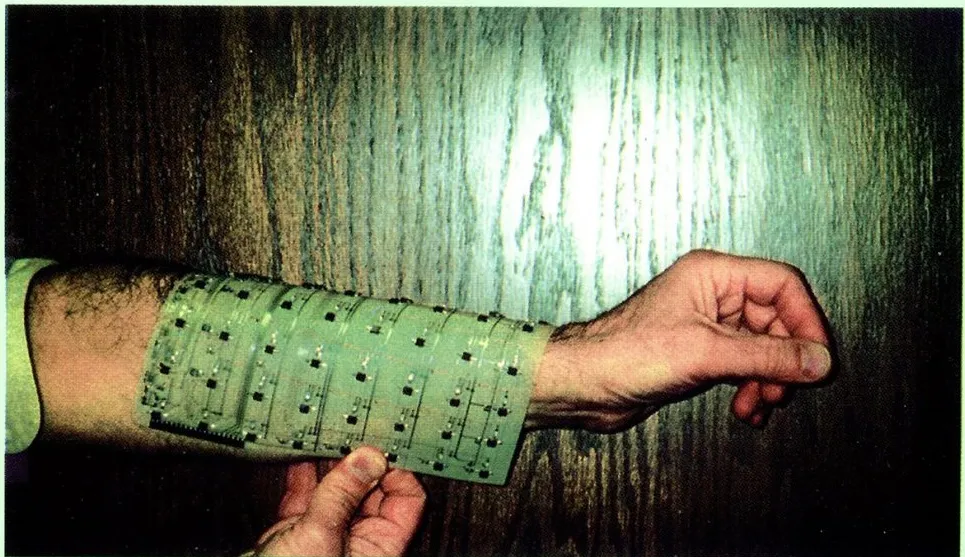Sensitive Skin
Man’s dream for machines which can be operated in unsupervised environment without the fear of impending threat to its surroundingsis not far away from being fulfilled with the advent of Sensitive Skin. Sensitive Skin is a large-area, flexible array of sensors with data processing capabilities which can cover part or entire surface of machine. It will revolutionize chief areas of service industry, make crucial contributions to human prosthetics, and augment human sensing when fashioned into clothing. IT industry will take a huge leap forward owing to incredible data processing.
Sensitive skin will bring a fundamental turnaround in design paradigm by scheme of all-encompassing sensing. Since it holds embedded sensors and related signal processing hardware, skin has to be flexible enough to fulfill this state-of-the-artrequisite and must stretch, shrink or wrinkle as per demand. These requirements call for innovative materials for wiring to maintain integrity. A novel type of sensing which includes the ability to sense contamination, dust, chemical substances, temperature, radiation is required to provide dexterous motion of the machine.
The control system must focus intermittently on single and multiple points of collision on the machine’s body, modify the control within the real-time constraints and change kinematics of body. Based on the continuous stream of data received from sensitive skin, planning algorithms will have to produce collision-free motion at every point.
Some of the technology can be potentially suitable for sensitive skin. Simple and less number of sensing devices and fault tolerance during manufacture and in-use points to the adoption of amorphous or polysilicon technology for sensitive skin.Many signals are collected simultaneously over a large area on skin which may be susceptible to cross talk. Skin may be particularly sensitive to noise generated in transmission between the individual elements and the central processor which motives on-element D/A conversion.New technologies have enabled shortening of thin film transistor channel used for sensitive skin by an order of magnitude. Reducing the channel resistance by a factor of ~100 to 10k ohm, and gate delay to 0.1 s, we could raise the sampling rate to 1000 per second which is an excellent achievement. Polycrystalline A4B6 and A2B6 compounds as well as organic semiconductor devices and optoelectronics deposited on flexible substrates are some reliable options.High pattern density is one of the main drivers of IC technology and with the advent of laser and nano-printing, the density of the directly printed devices can be raised orders of magnitude above ~10000 per square centi-meter.
Existing prototypes are clumsy, have low resolution and accuracy; serious research on the above issues can enable ubiquitous presence of sensitive skin in our society.




